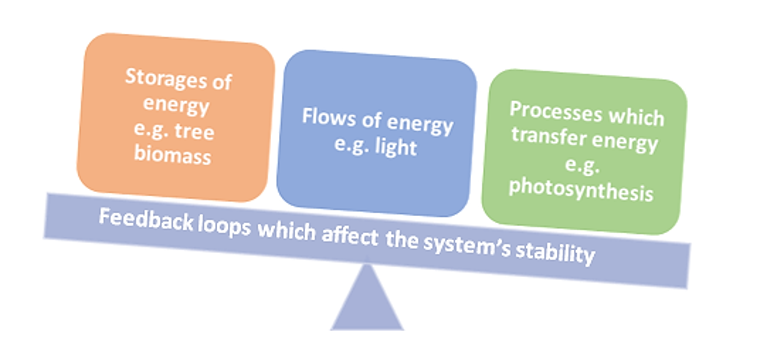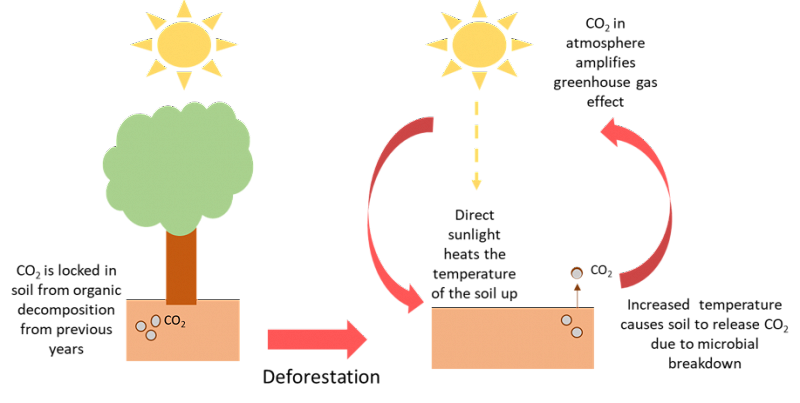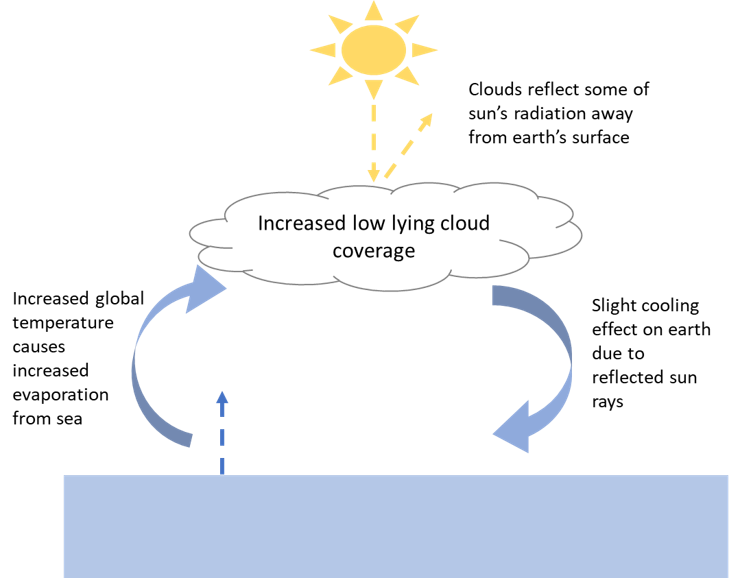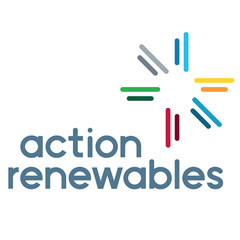What are climate feedbacks?

In today’s world, it is difficult not to see or hear about the increasing number of climate-related events that are happening, both within the UK and around the globe. With all this climate change awareness, there can be a lot of associated jargon that is easy to lose track of. A particular term that you may have heard about within this climate jargon is ‘climate feedbacks’. So, what are these feedbacks and how do they work?
Causes of climate disruption
The system that is our climate has been visibly disrupted. The main danger of this disruption is, of course, the enhanced greenhouse gas effect that has subsequently heated our planet by approximately 1°C so far, compared to that of the average 20th-century global temperature.
Greenhouse gases, such as carbon dioxide, methane and water vapour all contribute to creating a blanket around the earth. This blanket-effect results in less solar radiation being reflected back into space and instead, it remains in the earth’s atmosphere. This trapped radiation is what creates the greenhouse effect that heats up our earth.
In the context of these feedbacks, the Earth can be viewed as a collection of systems, composed of four main parts that interact with each other as shown in Figure 1:

Figure 1 - Depiction of the main mechanisms at work within Earth's systems.
Staying in equilibrium...
Generally, systems like to stay in equilibrium and in order to do this, they need to be able to stabilise themselves. Feedback mechanisms are a way in which systems can regulate after a change has occurred. An example of a self-regulating system is the human body and its temperature control.
When the brain is sent information that the body is too hot, it sends signals to your skin to start sweating. This sweating allows your body temperature to reduce, therefore allowing your temperature to stabilise. The change to your body’s system was an increase in temperature and because the feedback caused a decrease in temperature, this is called negative feedback. A negative feedback acts to reduce the effect of the change that has occurred. A positive feedback, on the other hand, will amplify the effect that the change has induced.
Reducing vs Amplifying
When we talk about feedbacks concerning climate change, these mechanisms will either reduce or amplify the effects of global warming. A negative feedback reduces the effects of global warming, whilst positive feedback amplifies this warming effect. It is important to note that the words ‘positive’ and ‘negative’ in this instance do not infer whether the feedback is good or bad, rather the opposite.
Figure 2 (below) shows an example of a positive feedback, which occurs due to the continual deforestation taking place around the world. When organic compounds like that of plants and animals decompose into the earth, this matter is then stored as carbon which is locked into the soil. The presence of trees provides coverage for the soil. However, when deforestation takes place, the soil is exposed to direct sunlight which in turn increases the temperature of the soil. As the temperature rises, microbes in the soil break down the stored carbon into carbon dioxide (CO2). This CO2 is then released from the soil into the atmosphere. This adds to the greenhouse gas effect which in turns contributes to an increase in global temperature rise and so the cycle continues.

Figure 2 - A diagram showing an example of positive feedback.
Other examples of positive feedback include the ice-albedo feedback whereby increased temperatures cause arctic ice to melt. Less ice means less sun is reflected back into space. The sun’s rays are instead absorbed by the sea and cause an increase in temperature which causes more ice to melt and so on.
Figure 3 below shows an example of negative feedback. In this scenario, the increased global temperature causes increased evaporation from the sea. This water vapour goes on to create low-level cloud coverage at higher rates than usual. The presence of these clouds causes some of the sun’s radiation to be reflected away from the Earth. This temporarily reduces the earth’s surface temperature. This negative feedback is only the case for low lying clouds, as studies have shown that the level that clouds are present can complicate the kind of feedback that occurs.

Figure 3 - Diagram showing an example of negative feedback.
The rate at which these feedbacks are occurring is very hard to estimate, due to the complexity of the systems involved. Hopefully, for us, there might be some negative feedbacks that haven’t been discovered yet, which may help to balance the positive feedbacks. It can be daunting to read about things that seem out of our control, however, it’s important not to forget how much of a contribution each of us can make in our daily lives to tackle climate change. For tips on how you can reduce your carbon footprint check out the blog below:



